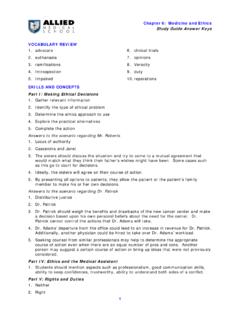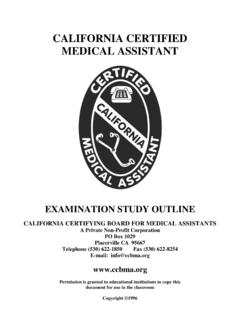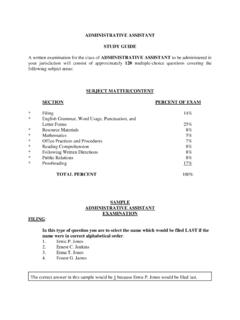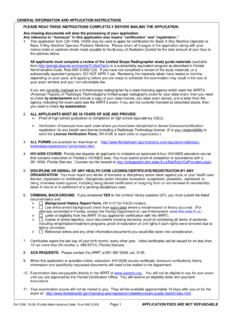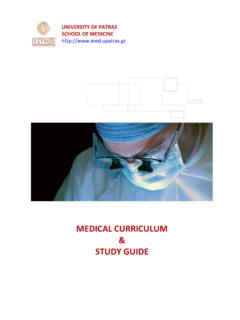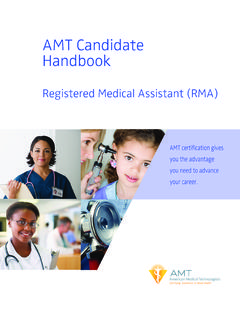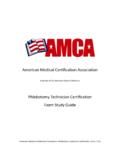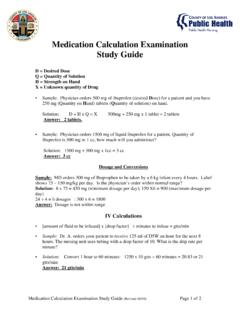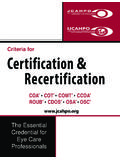Transcription of ASSIGNMENT 1-1 REVIEW QUESTIONS - Allied Schools
1 Chapter 2: The Healthcare Industry study guide Answer Keys VOCABULARY REVIEW1. triage 2. credentialing 3. encounter 4. standards or indicators 5. indicted 6. indigent 7. peer REVIEW 8. amenities 9. cited 10. accreditation 11. naturopathy 12. osteopathy 13. chiropractic 14. allopathy 15. staff privileges SKILLS AND CONCEPTSPart I: Pioneers in Medicine1. Vivien Thomas 2. Moses 3. Hippocrates 4. Galen 5. Andreas Vesalius 6. Dr. William Harvey 7. Anton van Leeuwenhoek 8. John Hunter 9. Dr. Edward Jenner 10. Dr. Ignaz Philipp Semmelweis 11. Louis Pasteur 12. Dr. Joseph Lister 13. Dr. Crawford Williamson Long 14. Marie & Pierre Curie 15.
2 Florence Nightingale 16. Clara Barton 17. Margaret Sanger 18. Dr. Elisabeth K bler-Ross 19. Salk & Sabin 20. Ho 21. Dr. C. Everett Koop Part III: National Healthcare Organizations1. World Health Organization 2. Department of Health and Human Services 3. United States Army medical Research Institute for Infectious Diseases 4. Centers for Disease Control and Prevention 5. National Institutes of Health 6. Clinical Laboratory Improvement Act 7. Occupational Safety and Health Administration Part IV: Healthcare Professionals1. sole proprietorship 2. partnership 3. corporation 4. chiropractor 5. Osteopathic 6. dentist 7. optometrist 8.
3 Podiatrist 9. medical technologists 10. Physician assistants 11. Nurse anesthetists 12. Physical therapists 1 Chapter 2: The Healthcare Industry study guide Answer Keys Part V: Healthcare Facilities1. occupational health center 2. day surgery 3. Assisted living 4. Urgent care 5. Sleep centers Part VII: Short Essay Questions1. The clinical education at Johns Hopkins was superior, because the school partnered with Johns Hopkins Hospital, which had been created expressly for teaching and research by members of the medical faculty. 2. The American medical Association adopted the staff of Aesculapius as the symbol of medicine. The symbol is a staff encircled by a serpent.
4 The caduceus often is mistakenly used to represent medicine but is actually the medical insignia of the Army medical Corps. This icon is a staff encircled by two serpents, bearing wings at the top. 3. The history of medicine clearly influences medical practice today, because yesterday s discoveries are today s medications and treatments. Research is an ongoing necessity in the medical field. As technology becomes more and more sophisticated, medical advancements follow. 4. Greek and Roman mythology contributed the major portion of the medical terms we use today. Terms have also been borrowed from Anglo-Saxon, German, Arabic, and other sources, including the Bible.
5 5. Students should choose a medical pioneer and briefly explain why his or her contribution was important. 6. Hospitalists are physicians whose primary professional focus is the general medical care of hospitalized patients. Most hospitalists are employed by the healthcare facility instead of having individual freestanding offices in which patients are seen and treated. The hospitalist works a specific, set number of hours each week and does not directly experience the economic pressures of managed care, because they usually are placed on a salary. Part VIII: Healthcare Occupations1. p, Athletic trainer 2. j, Kinesiotherapist 3. m, Physician assistant 4.
6 B, Cardiovascular technologist 5. e, Pharmacy technician 6. g, Anesthesiology assistant 7. d, Physical therapist 8. c, Therapeutic recreation specialist 9. a, Audiologist 10. f, Dietetic technician 11. o, Respiratory therapist 12. l, Orthoptist 13. h, Specialist in blood bank technology 14. i, Diagnostic medical sonographer 15. t, Nuclear medicine technologist 16. n, Surgical technologist 17. k, Occupational therapist 18. q, medical technologist 19. r, Emergency medical technician 20. s, Health information specialist 2
